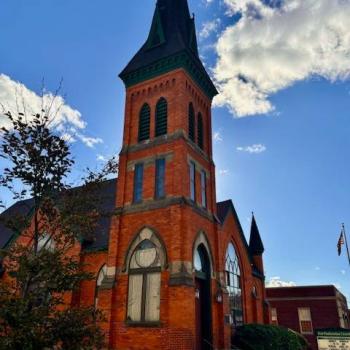But will they actually receive it? Despite extensive public awareness about addiction and the increasing accessibility and affordability of recovery and treatment options, a disproportionately large number of Americans with the disease do not get the help they need. The consensus is that only one in ten Americans with a substance addiction receives treatment, in contrast to seven in ten for diseases such as hypertension, major depression and diabetes.[xi] Only one in ten Americans.
So, in treating the epidemic of addiction, much work is left to do—in the absence of which the increasing recovery gap will remain a downright shame. If the self-declared mission of Jesus is to proclaim good news to the poor, release to the captives and freedom to the oppressed, how might the church join in that mission, better loving the addicts in our midst? How might the church, "the body of Christ," better incarnate the prodigal God it worships?
-From The Recovery-Minded Church, chapter 5, "Ending the Shame"
[i]Stephanie Desmon and Susan Morrow, "Drug addiction viewed more negatively than mental illness," HUB, Johns Hopkins University, October 1, 2014, http://hub.jhu.edu/2014/10/01/drug-addiction-stigma.
[ii]The Big Book reads, "We are sure God wants us to be happy, joyous, and free. We can't subscribe to the belief that this life is a vale of tears, though it once was just that for many of us. But it is clear that we made our own misery. God didn't do it." Alcoholics Anonymous, The Big Book, 4th ed., 133, www.aa.org/assets/en_US/en_bigbook_chapt9.pdf.
[iii]Another 15 percent answered "three to five times," and 14 percent answered "more than five times."
[iv]Simpson is citing a statistic from the National Institute of Mental Health (NAMI) accepted by most experts that says that "about one in four adults—a little more than 25 percent of American ages eighteen and older—suffers from a diagnosable mental disorder in a given year." There is no reason to conclude that in the church this statistic would be any different, or that, if it is different, it is lower; if anything, we would do well to expect that in the church this percentage is actually higher. See Amy Simpson, Troubled Minds: Mental Illness and the Church's Mission (Downers Grove, IL: InterVarsity Press, 2013), 33-35. See also "Mental Illness Facts and Numbers," NAMI, March 2013, www2.nami.org/factsheets/mentalillness_factsheet.pdf.
[v]Simpson, Troubled Minds, 33.
[vi]The report reads, "Addiction affects 16 percent of Americans ages 12 and older—40 million people. That is more than the number of people with heart disease (27 million), diabetes (26 million) or cancer (19 million). Another 32 percent of the population (80 million) use tobacco, alcohol and other drugs in risky ways that threaten health and safety." See CASAColumbia, "Addiction Medicine: Closing the Gap Between Science and Practice," June 2012, http://www.casacolumbia.org/addiction-research/reports/addiction-medicine.
[vii]See Jean Kinney and Gwen Leaton, Loosening the Grip: A Handbook of Alcohol Information (St. Louis: Mosby Press, 1995), 21, quoted in Bucky Dann, Addiction: Pastoral Responses (Nashville, TN: Abingdon Press, 2002), 9.
[viii]See Trysh Travis, The Language of the Heart: A Cultural History of the Recovery Movement from Alcoholics Anonymous to Oprah Winfrey (Chapel Hill, NC: University of North Carolina, 2009), 4.
[ix]Ibid.
[x]This estimate is based on the latest National Survey on Drug Use and Health produced by SAMHSA and referenced in the introduction. The report concludes that while 22.5 million people over the age of twelve need treatment for substance abuse, only 2.5 million seek it.
[xi]See "Closing the Addiction Treatment Gap," Open Society Institute, June 2010, http://www.opensocietyfoundations.org/sites/default/files/early-accomplishments-20100701.pdf.




